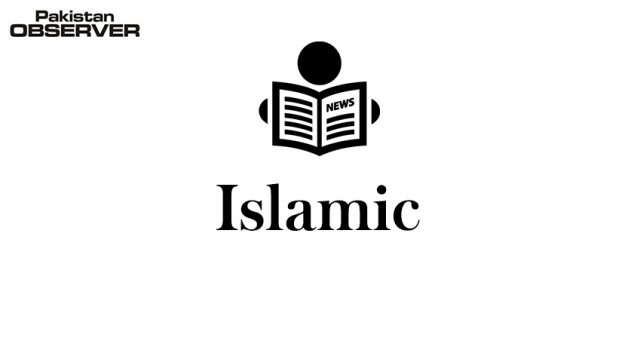After remaining resilient in 2020, the Islamic finance segment is performing strongly this year, as an improved economic environment, a rise in the number of large projects and an increased focus on environmental, social and governance (ESG) factors combine to drive demand.
Despite the twin challenges of Covid-19 and the fall in global oil prices, the segment’s assets grew by 10.6% last year, according to global ratings agency S&P.
Although this was down on the 17.3% growth rate recorded in 2019, it was nevertheless a strong performance in light of the global recession, with many suggesting that the segment’s positive growth was a sign of its strong future potential.
Building on this, S&P forecast that the global Islamic finance industry will grow by 10-12% annually over the course of 2021 and 2022.
This positive projection is largely built on an expected economic recovery in key Islamic markets in the Gulf and South-east Asia, driven by the rollout of large infrastructure projects in countries like Saudi Arabia and Qatar, and an increase in sukuk (Islamic bond) issuances, which S&P expects will reach $140-155bn this year, up from $139.8bn in 2020.
Indeed, some individual lenders have experienced far more dramatic growth, with the Dubai-based Emirates Islamic recording a 358% year-on-year growth in net profits over the first nine months of the year.
Islamic finance increases market share
Perhaps unsurprisingly, the continued growth of Islamic finance is translating into increased prominence within global finance markets, particularly in Muslim-majority countries in the Middle East and South-east Asia.
For example, in the GCC – the world’s largest Islamic finance market, with around 45% of the global share – sharia-compliant banking assets as a proportion of total banking assets have grown significantly in recent years.
In Saudi Arabia, sharia-compliant assets rose from just 29% of total banking assets in 2018 to 50.6% in 2020, while the corresponding figures increased from 37.9% to 42.5% in Kuwait and 19.7% to 26.6% in Qatar.
Elsewhere, in Malaysia, the world’s third-largest Islamic finance market, the proportion of sharia-compliant finance rose from 22.8% to 30.1% over the same period.
However, this trend is not universal, with Islamic banking assets in the UAE experiencing a slight fall in terms of their proportion of overall assets, and the corresponding figures in Bahrain and Oman only rising by a small margin.
Increased M&A
This increase in asset value and market share has naturally led many conventional banking institutions to turn their attention to Islamic finance.
Coinciding with a broader trend of mergers and acquisitions (M&A) in the Gulf, a number of conventional institutions have sought to buy out or merge with Islamic banks in recent years.
For example, in 2019 the Abu Dhabi-headquartered Islamic finance institution Al Hilal Bank joined forces with the Abu Dhabi Commercial Bank and the Union National Bank in what is the region’s largest tie-up to date. The merged entity became the UAE’s third-largest bank, with an estimated $114.4bn in assets.
The M&A activity continued into 2020, with the National Bank of Bahrain (NBB) acquiring an 78.8% stake in the Manama-based commercial lender Bahrain Islamic Bank (BisB) in January, while in the same month Qatar’s Masraf Al Rayan finalised a merger with Al Khaliji Commercial Bank, creating Qatar’s second-largest lender and one of the region’s largest shariah-compliant groups.
Meanwhile, in July last year Oman Arab Bank completed the takeover of fellow Omani institution Alizz Islamic Bank.
“On a strategic level, the integration of conventional and Islamic banks provides stronger balance sheets through a robust risk management framework,” Yaser Alsharifi, group chief strategy officer of the NBB, told OBG.
“It can also lead to an acceleration in funding and capital synergies, as well as opportunities for joint bids for larger corporate deals.”
While moving into lucrative Islamic banking markets is often a motivation for conventional banks, there are also a series of benefits that M&A can bring to Islamic lenders, which tend to be smaller than their conventional counterparts.
With NBB owning 80% of BisB, there have been two important benefits,” Hassan Jarrar, CEO of BisB, told OBG. “In terms of talent development, the employees of both banks now have more opportunities for career progression, while in terms of scaling up BisB’s operations, the acquisition by NBB has contributed the financial backing we needed to expand our reach.”
Despite the considerable benefits associated with M&A, industry figures note that there are some challenges associated with bringing two different institutions together.
“Key integration challenges include unlocking the synergies value early during the integration plan,” Alsharifi told OBG.
“This can be achieved through a clearly communicated governance framework and a well-structured integration plan with effective monitoring and control of performance.
In addition, it is important to have an effective change management plan focusing on talent retention and culture harmonisation during the initial integration years.”
The ESG of Islamic finance
Looking forward, the turn towards ESG in global finance is also expected to provide Islamic banking with substantial growth opportunities, particularly in the Gulf.
In fact, there are many key parallels between ESG values and those of Islamic finance, which similarly address social and environmental factors.
For example, in its discouragement of interest, strong focus on profit- and loss-sharing and belief in not financing activities that cause societal harm.”—Oxford Business Group










